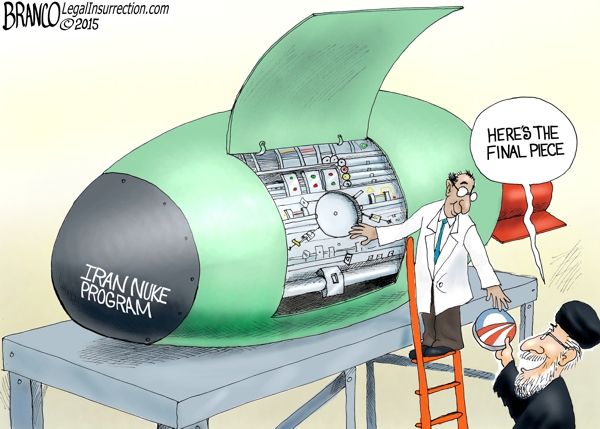The following is from a Heritage Action email:
1. The inspections paradigm is flawed and gives Iran time to delay inspections and hide materials. There’s a lot of opportunities for Iran to use legalese to stall, the baseline is that Iran can finagle up to 24 days to hide its contraband.
2. The agreement doesn’t dismantle the nuclear program effectively. A lot of analysts talk about the concept of “breakout time,” or the time it would take for Iran to develop a bomb if it chose to break the agreement. The White House itself estimates that the agreement only pushes breakout time from 2-3 months to a year.
3. It gives Iran concessions that we wouldn’t even give our allies, and could spark a nuclear arms race in the region. Saudi Arabia is already demanding similar terms for nuclear development, and Sunni states in the region (who are not pleased with Shia Iran’s rise in power) are likely to hedge their bets and try to start their own programs. The possibility of a nuclear arms race is quite real, and even center-left think tanks like Brookings are concerned about it (a good quip to throw back at anyone who calls us alarmist). Shadi Hamid (a Brookings scholar and tentative supporter of the deal) has a good quote on this: “The boutique case-by-case approach to the region that Obama has championed sounds smart and nuanced in theory…but if the Arab Spring underscored anything, it’s that politics are rarely only local.”
4. The sanctions relief will give Iran the economic boost it needs to become a regional power, after which it can throw off the treaty and make a final sprint for the bomb. This talking point is also effective in answering the argument that economic sanctions can “snap back” into place if Iran cheats. Sanctions down the road are not the same as sanctions now, especially since the unfreezing of Iranian assets is going to create a $150 billion windfall. This injection of money back into the Iranian economy is estimated to help oil production increase from 2.9 million to 4.2 million barrels a day by 2020 (that’s an estimated 45% increase). Think of it as a steroid shot into the Iranian economy, one that can’t be taken back.
5. It doesn’t have an effective mechanism for dealing with Iran “cheating” on the agreement. There’s a lot of talk about “snap back,” a provision that allows sanctions to automatically snap back into effect if the United States gets wind that Iran is cheating. Long story short, its full of problems and delays. The first step is presenting evidence of cheating to a committee of nations that includes Iran. That means we need to share our sensitive intelligence with the nation we’re gathering intel on. After several weeks, we can kick things up to the U.N. Security Council, and if it does nothing for 30 days (e.g. if Russia digs in its heels and U.S. has to veto all their proposals), then sanctions “snap back” into effect. Obviously, this is anything but snappy. It signals Iran two months in advance that sanctions might be “snapping back” into place, allowing them to set their affairs in order. Also, there’s not really an intermediate provision for mild cheating. The mechanism is all-or-nothing, making it more likely that Iran will cheat on small stuff in expectation that we won’t hit the kill switch for it.
Image credit: Cartoon by A.F. Branco.

